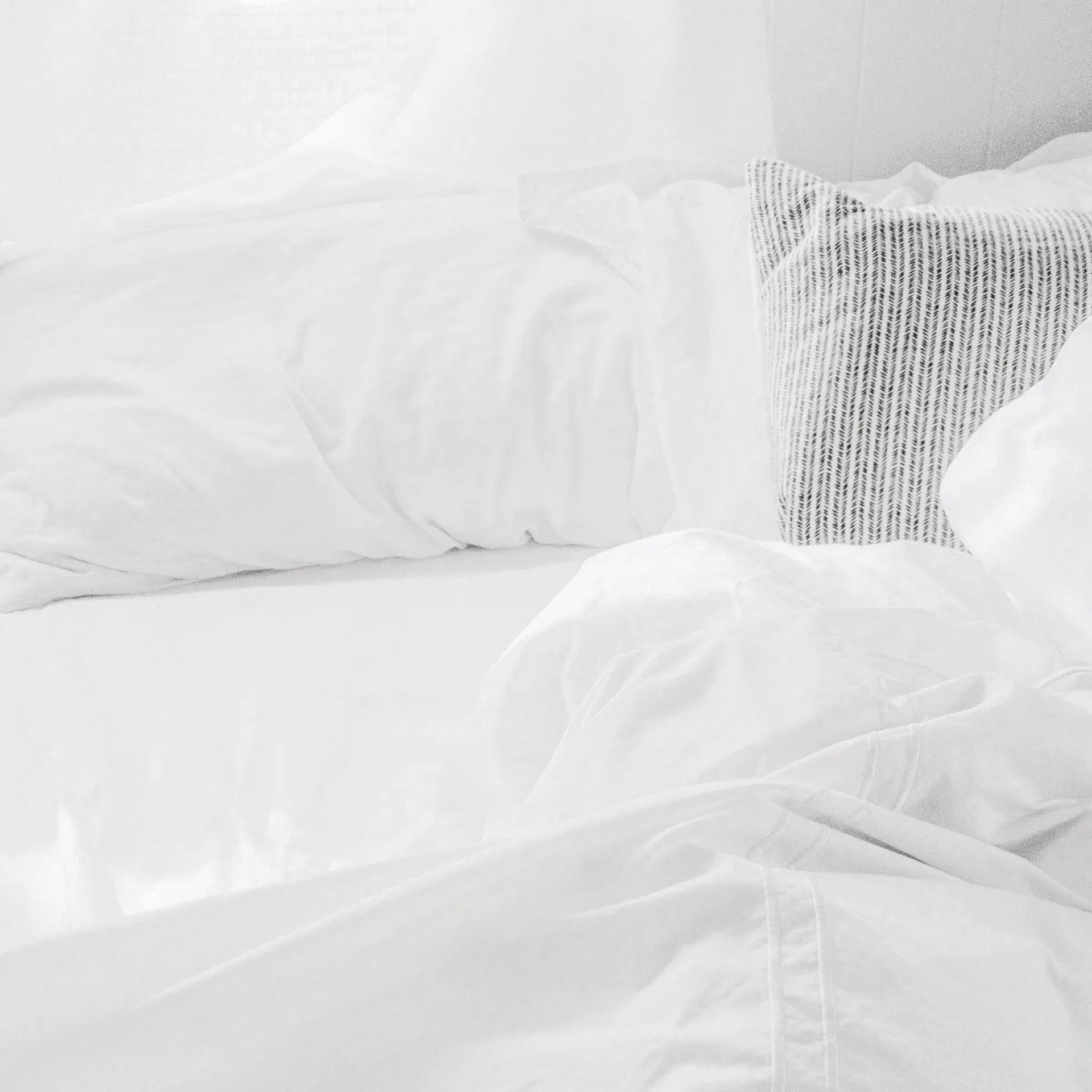5 Natural Yeast Infection Remedies You Can Find at the Supermarket

Yeast infections are just plain unpleasant, and for many women, dealing with yeast is a chronic battle. But as tempting as it can be to reach for the over-the-counter ovules that claim to cure that infernal itching, natural yeast infection remedies are far better for your overall health and for ensuring the balance of flora in your body that will keep future yeast infections at bay.
You see, you don’t really want to wipe out your system. Within the vagina, a healthy balance of bacteria and yeast — including the Candida albicans yeast responsible for yeast infections — thrive and keeps you healthy. It’s when this balance is thrown off that problems arise.
Women often get yeast infections when they take antibiotics, and it’s no surprise: antibiotics wipe out the bacteria in your body, including the healthy ones keeping the yeast at bay. When this happens, you can end up with a yeast infection or even systemic Candida, if your immune system is very depressed.
But most anti-fungals prescribed by doctors leave you in a worse state than before you started taking them. As Christina Major, MS Holistic Nutritionist, Herbalist, and certified Metabolic Typist of Radiance Holistic Center explains, “Anti-fungals will not cure yeast infections, they only suppress the outbreak back to levels the body can manage.”
And Naturopathic doctor Serena Goldstein notes that a systemic fungal medication can elevate liver enzymes.
“Using suppositories or anti-fungals often upsets the body’s ability to naturally regulate,” says Major. “They will cause further problems when improperly used.”
Preventing a Yeast Infection
Dietary changes are key to preventing yeast infections before they even take hold. Goldstein recommends eliminating sugar, alcohol, and carbs from your diet, as these are foods that yeast thrive on.
Major, meanwhile, suggests avoiding processed or artificial foods, as well as any alkalinizing foods. “To reduce your risk, eat a diet that is 75 percent fruits and vegetables and 20 percent whole cuts of meat (not lunch meat or processed meats),” she says. “Sticking to a diet rich in vegetables is the best prevention. It allows the body to maintain its own balance, without the person trying to fix something that may not be broken.”
If you need a bit of extra help, for instance while taking antibiotics, add fermented foods to your diet.“Probiotic foods like sauerkraut, kefir, kombucha, yogurt, miso, and the others add back in the healthy bacteria and yeasts we need to be healthy,” says Major. “They also help block overgrowths of bacteria and yeasts, like in yeast infections.”
Natural Yeast Infection Remedies
If, despite your best efforts, you do get a yeast infection, there are some natural remedies that you can use before turning to ovules and antifungals. Here are five you can find in any supermarket.
But before you try any natural remedies, be sure that what you have actually is a yeast infection and not a similar condition like bacterial vaginosis.
If you are unsure that what you have is a yeast infection, or if your infection gets worse despite natural remedies, be sure to see a doctor, who may prescribe suppositories or antifungals. NY Health and Wellness Nutrition Director Jacqui Justice recommends only using these medications as a last resort, “When the issue is chronic or out of control.”
1. Yogurt
Yogurt is one product that many experts recommend, thanks to active ingredient Lactobacillus acidophilus, which, according to a research review in the Journal of Obstetric, Gynecologic & Neonatal Nursing, shows promising, albeit inconclusive, results pointing to its utility. L. acidophilus can keep Candida at bay, and introducing more L. acidophilus in moments where Candida has taken the upper hand allows the balance in the vagina to be restored. It also produces lactic acid, keeping the vagina’s pH low and not so Candida-friendly.
While Justice notes that when used in tandem with supplemental prebiotics and probiotics, yogurt can be part of a treatment.
Major agrees. “The proper healthy yogurts will add probiotics to your system, which help keep your body in balance,” she says. “They will not cure a yeast infection, nor help prevent one.”
She warns against using yogurt if you have a dairy sensitivity; in this case, it will make your yeast infection worse, not better. She also counsels against putting yogurt into the vagina. “The pH of the vagina is acidic, around 4-5 on the scale. Yogurt is the opposite, around 8-9,” she explains. “If you put yogurt in the vagina, you risk serious complications from causing the yeast infection to accelerate, to introducing new and potentially deadly pathogens.”
While many women and health experts do report yogurt being helpful when applied topically, other experts, including Dr. Oz, state that since yogurt does not contain the same bacteria as the vagina, this solution can actually cause more harm than help.
Use yogurt as a natural yeast infection remedy:
- Eat plain, organic yogurt with active cultures
- Take L. acidophilus capsules, preferably first thing in the morning
2. Raw Honey
Honey is a natural antibacterial and antifungal, so it’s no surprise that it can be used to help with yeast infections.
A group of researchers at Sohag University in Egypt published an article called, “Bee-honey and yogurt: a novel mixture for treating patients with vulvovaginal candidiasis during pregnancy.” In the article, the researchers found that a mixture containing honey and yogurt was actually more effective in treating yeast infections than other antifungal therapies.
Use honey as a natural yeast infection remedy:
- Use raw honey topically as a salve or by combining it with an apple cider vinegar and water solution; as it does contain sugar, some doctors recommend that it not be consumed in case of a yeast infection.
3. Coconut Oil
Coconut oil is a common topical cure for reducing the symptoms of a yeast infection, though there have been very few studies supporting its effectiveness. Goldstein notes that coconut oil can be used as a lube, so it is not dangerous to try using it topically.
Justice also notes that consuming coconut oil can reduce symptoms, as it contains 3 fatty acids that can help fight yeast overgrowth: caprylic acid, capric acid and lauric acid.
Major notes that coconut oil is not a direct treatment for a yeast infection, but it can promote a healthier environment and balance between bacteria and yeast. “What it does is add healthy fats to your diet so the body can control overgrowths of any hostile microbe,” she says. She also notes that consuming coconut oil will not counteract an otherwise unhealthy diet.
Use unrefined, organic coconut oil as a natural yeast infection remedy:
- Apply it topically to soothe symptoms.
- Cook with coconut oil as part of an anti-inflammatory diet.
4. Garlic
The jury is still out on the effects of garlic on a yeast infection.
“Garlic wouldn’t be my first choice because it’s more antibacterial and therefore more appropriate for bacterial vaginosis versus yeast,” explains Goldstein. “Though every so often someone may find relief with it.”
Major, however, disagrees. “As an antibacterial and antifungal, it works systematically to help the body remove dangerous pathogens,” she says. “The body does not recognize the natural yeasts in the vagina as dangerous. The garlic will not be effective against a yeast infection directly, only aid the body in restoring balance.”
But Judy Slome Cohain, CNM, sees things differently. In a 2007 article, she detailed the (science-backed) ways in which women could, in fact, use garlic to cure a yeast infection by placing a whole, peeled garlic clove into the vagina overnight.
Many of our experts warned that garlic can burn the delicate vaginal lining, so if you’d rather not insert garlic into the vagina, try using garlic in your diet instead. “Black garlic is especially helpful as it is fermented – making it also a prebiotic (which helps the probiotic more viable in the intestinal tract)” says Justice.
Use organic garlic as a natural yeast infection remedy:
- Take allicin (garlic) in gel cap form.
- Include more garlic in your diet, particularly fermented black garlic.
5. Apple Cider Vinegar
Apple cider vinegar is a great pH balance restorer, according to Major.
“The acidic nature of the vinegar lowers the pH of the vagina, restoring it to the natural state,” she says.
But that’s not all it does. It also helps recolonize the intestines and the vagina with a good balance of bacteria and strengthens the immune system, helping your body to fight off the overgrowth. For these reasons, raw, unpasteurized apple cider vinegar is a fantastic ingredient to use on a daily basis and even better when it comes to yeast infections.
Use raw, unpasteurized apple cider vinegar as a natural yeast infection remedy:
- Mix apple cider vinegar with water and drink on an empty stomach, first thing in the morning.
- Soak in an apple cider vinegar bath.
- Apply a mixture of water and apple cider vinegar topically with a cloth or cotton ball.
Have we missed any of your tried-and-true natural yeast infection remedies? Let us know via Facebook or Twitter.
Related on Organic Authority
Coconut Oil Shows Promise in Preventing Deadly Bloodstream Infection
7 Reasons Whole Food Dietary Supplements Can Improve Your Health
6 Skin Problems That Come with Working Out
Yeast infection remedies image via Shutterstock

